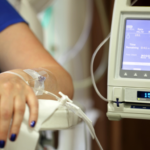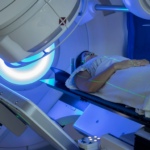
Breast cancer is a formidable adversary, but knowledge and early intervention are powerful weapons in the fight against it. This blog aims to provide a comprehensive understanding of breast cancer, focusing on the importance of early detection and the array of treatment options available. By shedding light on these critical aspects, we hope to empower individuals and raise awareness about this prevalent disease.
What Is Breast Cancer?
Breast cancer is a malignant tumor that originates in the breast tissue. It can develop in various parts of the breast, including the milk ducts, lobules, or even in the fatty tissue. Breast cancer is the second most common cancer among women worldwide and can also affect men, although it is less common.
Early Detection: A Lifesaver
Early detection plays a pivotal role in breast cancer outcomes. Detecting the disease in its early stages, when it is still localized, significantly improves the chances of successful treatment. Here are key methods of early detection:
1. Breast Self-Exams (BSE): Regular self-exams can help individuals become familiar with their breast tissue and detect any unusual changes, such as lumps or skin changes.
2. Clinical Breast Exams (CBE): Healthcare providers perform these exams during routine check-ups to detect any abnormalities in the breast tissue.
3. Mammograms: Mammography is the gold standard for breast cancer screening. These X-ray images can detect tumors that are too small to be felt.
4. Genetic Testing: Individuals with a family history of breast cancer may consider genetic testing to assess their risk.
Types of Breast Cancer
Breast cancer is not a single disease but rather a group of distinct subtypes, each with its unique characteristics. The most common types include:
1. Ductal Carcinoma In Situ (DCIS): The cancer cells are confined to the milk ducts and have not spread into surrounding tissue.
2. Invasive Ductal Carcinoma (IDC): This is the most common type of breast cancer, where cancer cells invade the surrounding breast tissue.
3. Invasive Lobular Carcinoma (ILC): Cancer cells originate in the milk-producing lobules and then invade surrounding tissues.
4. Triple-Negative Breast Cancer: This type lacks estrogen, progesterone, and HER2 receptors, making it challenging to treat with hormone therapies.
Treatment Options
The choice of treatment for breast cancer depends on various factors, including the type and stage of cancer, overall health, and patient preferences. Common treatment options include:
1. Surgery: Surgical options may include lumpectomy (removing the tumor and a small amount of surrounding tissue) or mastectomy (removing the entire breast).
2. Radiation Therapy: This treatment uses high-energy X-rays to target and destroy cancer cells.
3. Chemotherapy: Medications are used to kill cancer cells or slow their growth.
4. Hormone Therapy: For hormone receptor-positive breast cancers, hormone-blocking drugs can be effective.
5. Targeted Therapy: These drugs specifically target cancer cells, sparing healthy tissue.
6. Immunotherapy: This newer approach harnesses the body’s immune system to target and attack cancer cells.
The Power of Early Detection and Treatment
Breast cancer is a formidable adversary, but it is also highly treatable, especially when detected early. Regular breast self-exams, clinical exams, and mammograms are essential for early detection. Additionally, understanding the available treatment options empowers individuals to make informed decisions and actively participate in their care.
Breast cancer awareness and education are key factors in reducing its impact. By disseminating knowledge about prevention, early detection, and treatment, we can collectively work toward a world where breast cancer is not a life-threatening disease, but one that can be overcome with timely intervention and advances in medical science.




